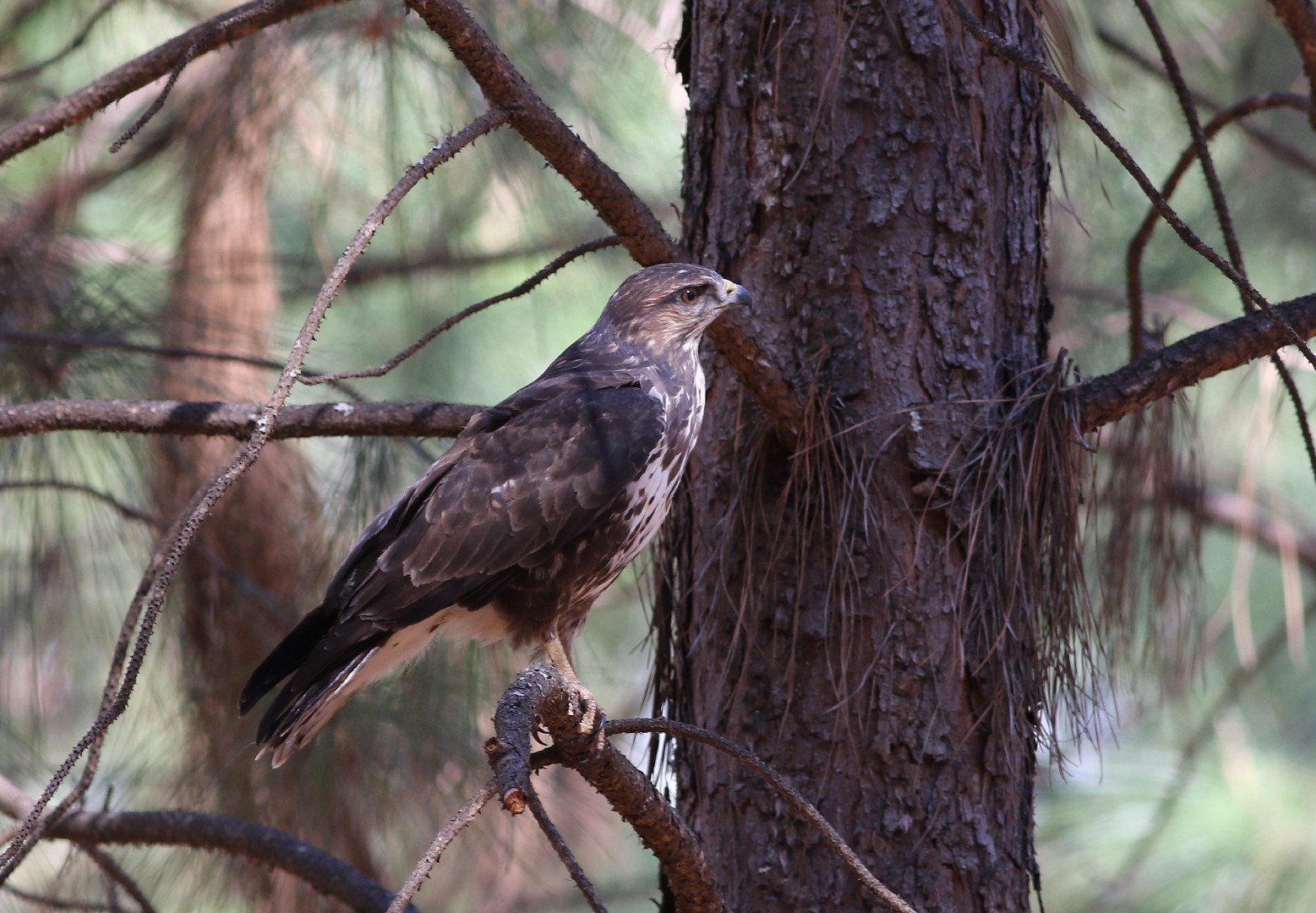Forest Buzzard
A species of Buzzards and Buteo Hawks Scientific name : Buteo trizonatus Genus : Buzzards and Buteo Hawks
Forest Buzzard, A species of Buzzards and Buteo Hawks
Botanical name: Buteo trizonatus
Genus: Buzzards and Buteo Hawks
Content
Description General Info
Description
The forest buzzard is very similar to the abundant summer migrant steppe buzzard Buteo buteo vulpinus, the head, the back and upperwings are brown, marked out with rufous edges to the feathers the amount of which varies between individuals. The chin is whitish and unmarked, the breast and belly are whitish but marked with a variable amount of brown spots, and the undertail coverts are plain whitish. There is variation and some adults show brown barring along the breast sides and the belly while all but the palest birds show a distinctive white ‘U’ mark in the middle of the otherwise blotched abdomen. The underwings are white, with a reddish-brown tinge on the lesser underwing coverts and a dark comma shaped mark at the tip of primary coverts . The plumage on the thighs are uniformly reddish-brown, and the axillary feathers are white with brown barring. The upper tail is brown, washed with reddish-brown and the tail has some narrow dark brown bands with a broad dark brown subterminal band while the undertail bands can be indistinct. The body length is 41–48 cm (16–19 in) and the wingspan is 102–117 cm (40–46 in). 
Nest Placement
Tree
Feeding Habits
Forest Buzzard predation includes mammals like Chlorotalpa duthiae, various birds, snakes such as Lycodonomorphus rufulus, insects, and a scorpion. It hunts from perches, targeting ground-based prey.
Habitat
Forest Buzzard typically resides in native temperate evergreen woodlands, which span both lowland and upland areas up to an elevation of 1500 meters. These environments can range from pristine forests to forest edges and also include man-made plantation forests populated with pine and eucalyptus trees. While forest Buzzard is adaptable to some altered habitats, it generally avoids coastal lowland tropical forests.
Dite type
Carnivorous
General Info
Feeding Habits
Bird food type
Distribution Area
The forest buzzard is endemic to South Africa, Lesotho and Swaziland where it occurs in an arc from the mountains of eastern Limpopo Province south through the Drakensberg of Kwazulu-Natal to the Western Cape. It as, at least, a partial migrant and seems to be a winter visitor (June–August) in the Drakensberg of Eastern Cape northwards where there are no breeding records. Two birds ringed in the east (Kwazulu-Natal and Mpumalanga) were subsequently recovered in the south of South Africa having moved between 800–1,300 km (500–810 mi). 
Species Status
The forest buzzard was formerly considered threatened in South Africa but the increase in exotic plantations and the species adaptation to breed in those plantations has allowed the population to increase. It is therefore treated as Near Threatened by the IUCN 
